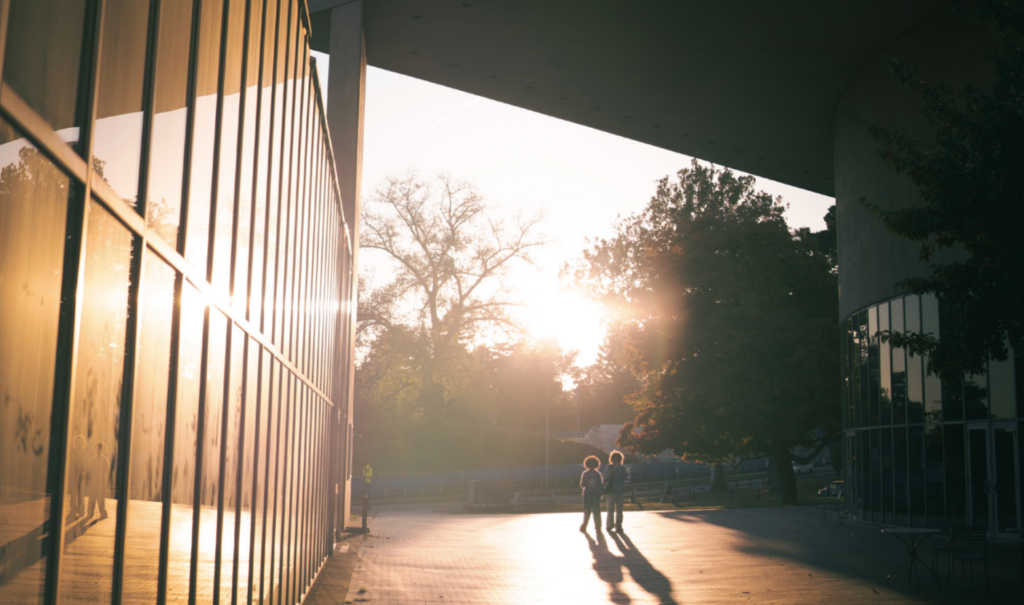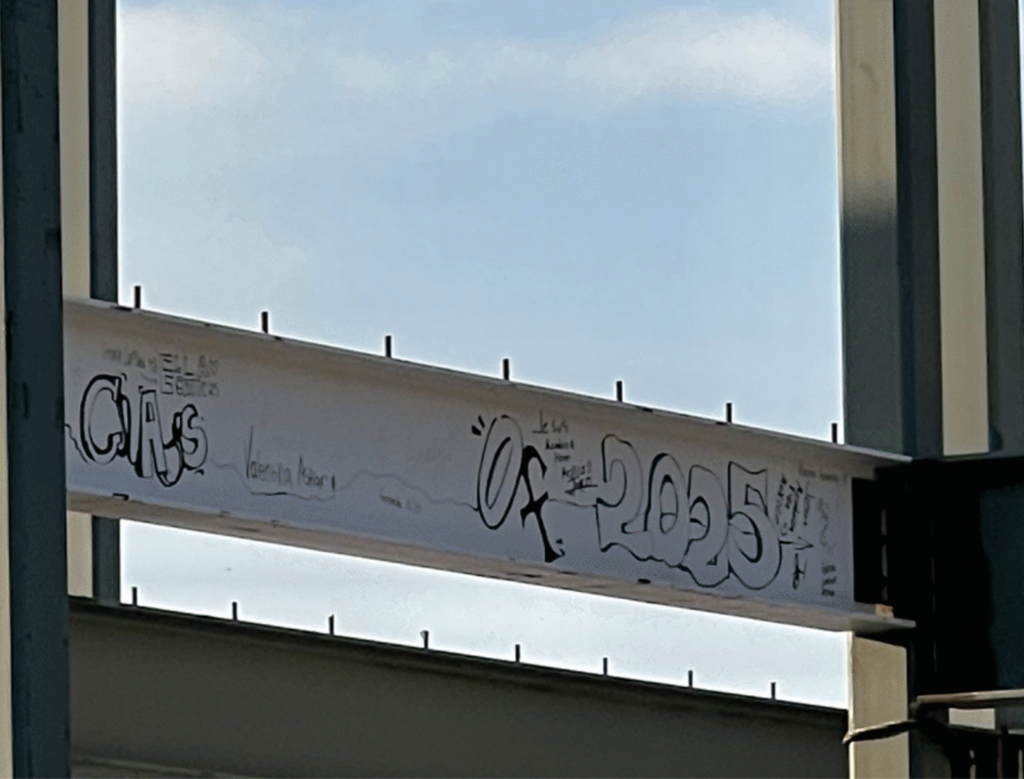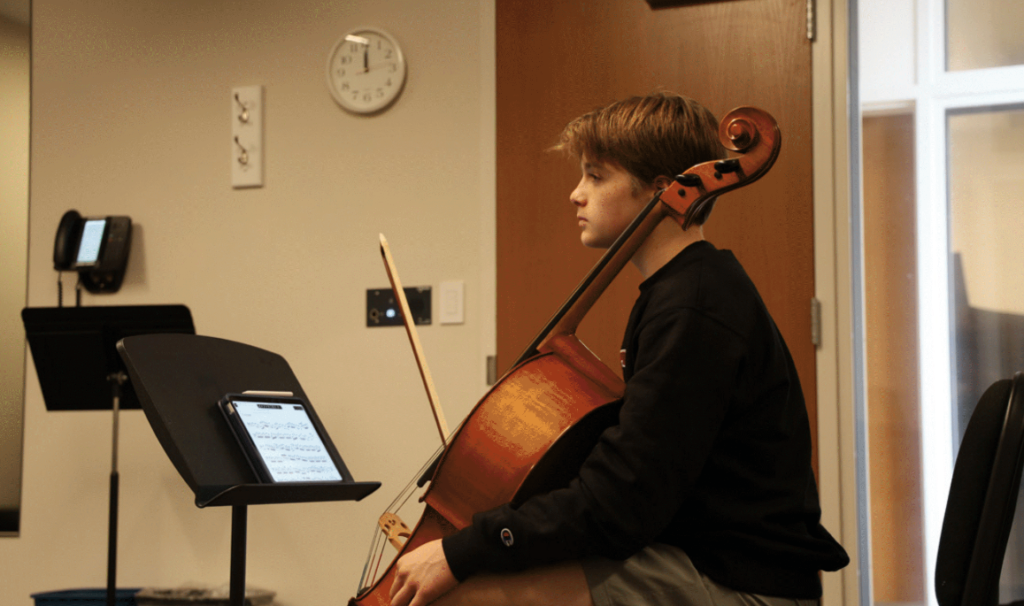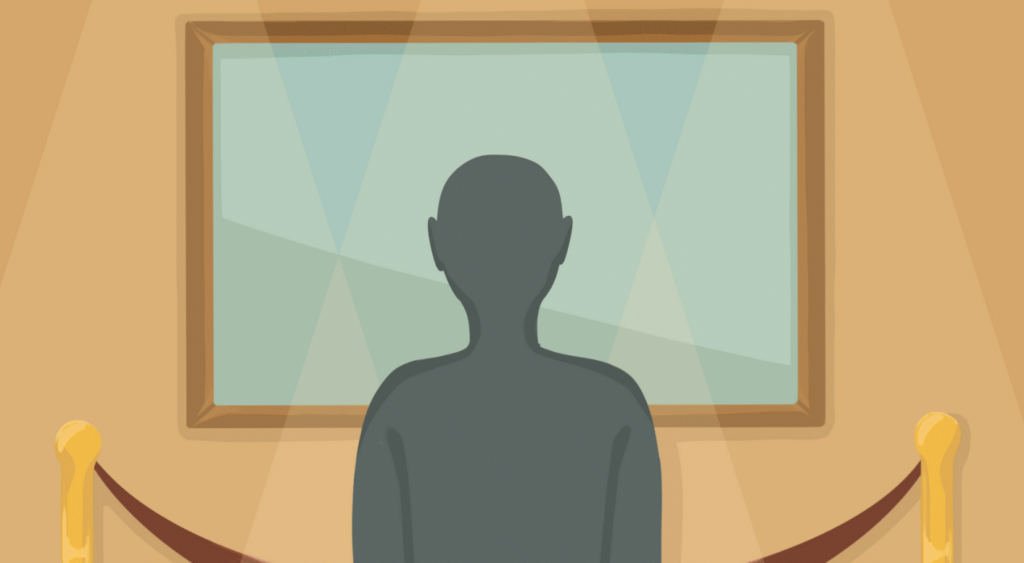By Sophie Park ’27 and Bridget Rivard ’28 / Reporters

Students walk through the space between the two sections of the historic PMAC.
The modern and seemingly solitary Paul Mellon Arts Center (PMAC) stands at the far corner of Choate campus. Its new-age architecture and simplicity differ from the traditional Georgian and Jeffersonian architecture styles that mark many of Choate’s other buildings, such as St. John Hall and the Paul Mellon Humanities building. Today, the PMAC plays an integral role in the school community, hosting events such as plays, musicals, and concerts. However, beneath all of the beige concrete and glass, the PMAC hides some captivating secrets.
Starting as a vague idea in 1951 and receiving skepticism from many students, the building soon roped in famous architects and important benefactors to aid in its construction, allowing it to serve its crucial role in the Choate community today.
Almost 15 years prior to the construction of the PMAC, ideas for an arts center on the Choate campus had been briefly discussed by the Board of Trustees but had never been acted upon. That is, until Class of 1925 alumnus Paul Mellon made a generous donation of $1.5 million to the School in 1966. Mellon was born in 1907 to one of the wealthiest men in America in 1907, Andrew W. Mellon. After Paul Mellon’s Choate education, he went on to study a number of topics, including art, at Yale University. He dedicated his life to spreading his love of the humanities and the arts. With his generous gift, the idea of an arts building became a reality.
The exquisite structure of the PMAC was designed by award-winning architect I.M. Pei in 1972, who is celebrated for his unique designs of the Louvre Pyramid, the World Trade Center, and Mesa Laboratory. HPRSS teacher Mr. Jim Davidson recalled that “the [PMAC] ended up being for [Pei], the preliminary model for the National Gallery [of Art] in Washington, D.C.,” pointing out Pei’s prevalent angular architectural designs of “concrete, sharp edge, modernist, almost brutalist structure.” The PMAC is designed with two different wings, consisting of the Theater Wing and the Triangle Wing, which is connected by the underground Black Box theater.
During the time of the PMAC’s construction, Rosemary Hall, the all-girls school, had recently moved back to its Wallingford campus from Greenwich and was situated next to the Choate School, the all-boys school. Located between the two campuses, the PMAC was meant to serve as a bridge between the two schools. According to the Society of Architectural Historians, “Pei referred to the space as a trap, designed to lure the boys and girls to each other and to art.’”
A common theme throughout the project was the importance of the arts, shown in Pei’s goal of using the arts to bring students together and Paul Mellon’s emphasis on the arts’ importance in school culture. However, this new idea was not received well by some students on campus. Joining the Choate community shortly after the construction of the PMAC, Mr. Davidson remembers resistance from male theater groups on using the PMAC. They believed that performing and rehearsing in the basement of the St. John Chapel was sufficient.
In addition, Mr. Davidson noted that “as a school, there was a question mark about where the arts would fit into the curriculum.” Prior to the construction of an arts building, such courses were mostly adjunct, and community members were hesitant as to how serious the arts would become in future years.
In the early years, the new arts center was home to classic musicals such as Oklahoma! and West Side Story, allowing for more elaborate performances with the addition of a larger set space and an orchestra pit. 50 years later, the PMAC continues to provide a practical space for Choate arts students and a cultural gathering space for the community. Now, there are photography exhibitions and concerts, and the PMAC will host this term’s theater production: Eurydice.
The Paul Mellon Arts Center represents a new age of the arts, and its role in bringing our community together has been crucial. Throughout its diverse history, the PMAC brought in one of the most famous names in architecture, served a deeper meaning to Choate Rosemary Hall, and cost a grand total of $6.6 million, all paid for by Paul Mellon. Although causing some tension and hesitance during its earliest days, the PMAC has now stood for over 50 years as a powerful symbol of the arts. Since its inception, The PMAC has impacted every Choate student’s life significantly. Former Headmaster Seymour St. John stated it perfectly: “No student will leave our campus without having been touched by the arts in a way that will have a carryover throughout his entire life.”




